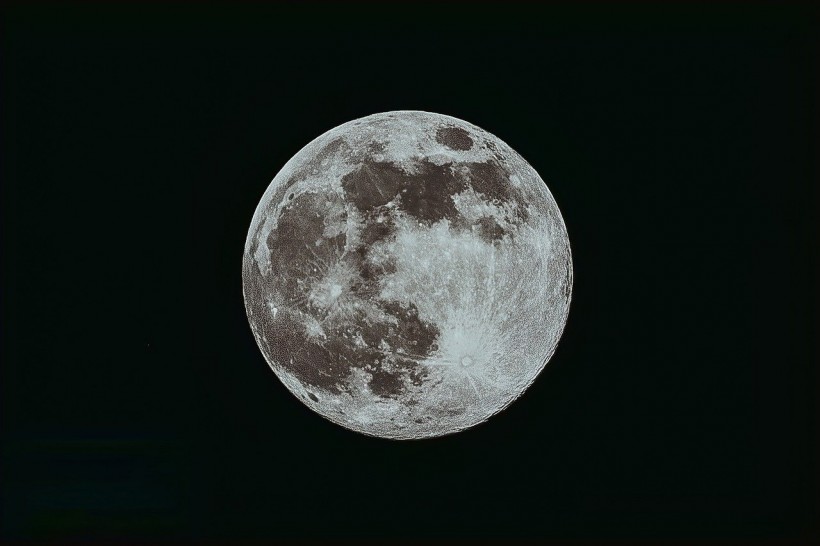Traveling on the Moon is not the safest endeavor with not only its rough terrain but also the fine dust particles that pose a hazard due to their low-gravity suspension. Research suggests that lunar regolith could be transformed into safe roads using a powerful lens.
The European Space Agency's 'PAVER' project explored melting regolith with focused light for lunar paving. Engineer Juan‑Carlos Ginés‑Palomares led this effort at Aalen University in Germany.

Turning Moon Dust into Smooth Lunar Roads: ESA's 'PAVER' Project for Future Lunar Colonies
Melting Moon Dust Using a Laser
Sintering, the process of forming a solid mass from small particles without liquefying the material, has shown promise in manufacturing large interlocking samples on the lunar surface for paving.
Efficiency is crucial when planning a human base on the Moon, necessitating reliance on available lunar resources. However, this proves challenging due to the Moon's limited resources, comprising rocks, dust (lunar regolith), ice, and a lengthy lunar day-night cycle.
To address these constraints, Ginés‑Palomares and his team aimed to assess the Moon's materials for potential road construction. They proposed using a lens to focus sunlight in a way that could melt lunar dust, creating interlocking tiles for road building.
Their experiments employed EAC-1A, a lunar regolith simulant created by the ESA, and a CO2 laser. They adjusted the laser's strength to identify the optimal heat level for producing these tiles.
In the research, titled "Laser melting manufacturing of large elements of lunar regolith simulant for paving on the Moon" published in the journal Scientific Reports, researchers demonstrated that the laser strength could match the available lunar sunlight, suggesting that lunar dust could be used to manufacture these tiles with the assistance of a relatively small Fresnel lens (2.37 square meters).
These tiles exhibited a strength comparable to concrete, making them suitable for lunar road and landing pad construction, while minimizing the risks associated with lunar dust. The next phase focuses on enhancing the material's durability by addressing microscopic defects to ensure a robust lunar road system.
READ ALSO: Scientists Extract Oxygen and Metal From Moon Rock Efficiently
Challenges of Building a Human Colony on the Moon
The idea of lunar colonization has been around for a while, and recent technological advancements are making it closer to reality, with NASA and private companies like SpaceX aiming to send humans to the Moon. However, there are significant challenges associated with lunar colonization and how scientists and engineers are working to overcome them.
These challenges involve technical, financial, health-related, legal, and environmental aspects, all of which need to be addressed to establish a permanent human presence on the Moon.
Technical Challenges of Moon Colonization
Creating a permanent human presence on the Moon requires overcoming substantial technical challenges, encompassing secure transportation systems, durable habitats for harsh lunar conditions, and sustainable energy and resource solutions.
Massive Financial Implications of Undertaking a Colonization Project
Lunar colonization necessitates substantial investments to develop required technologies, construct infrastructure, and maintain a permanent human presence. This venture will require a long-term commitment and sustained efforts over many years.
Potential Health Implications from Outer Space Exploration
Ensuring the well-being and safety of lunar colonists is contingent upon effectively managing and mitigating substantial health risks associated with cosmic radiation, lack of a breathable atmosphere, reduced gravity, and potential isolation and psychological stress.
Addressing Legal and Political Challenges in Lunar Colonization.
The pursuit of lunar colonization involves intricate legal and political challenges, including issues surrounding resource ownership, governance, and space activity regulation, which underscore the need for international collaboration and the creation of novel legal structures.
Environmental Impact of Colonization
Managing potential environmental impacts, such as changes to the lunar landscape, is crucial to ensure the sustainability of human activities on the Moon and prevent long-term harm.
RELATED ARTICLE: NASA Plans to Operate Nuclear Power Plants on Moon and Mars by 2026
Check out more news and information on Space in Science Times.














